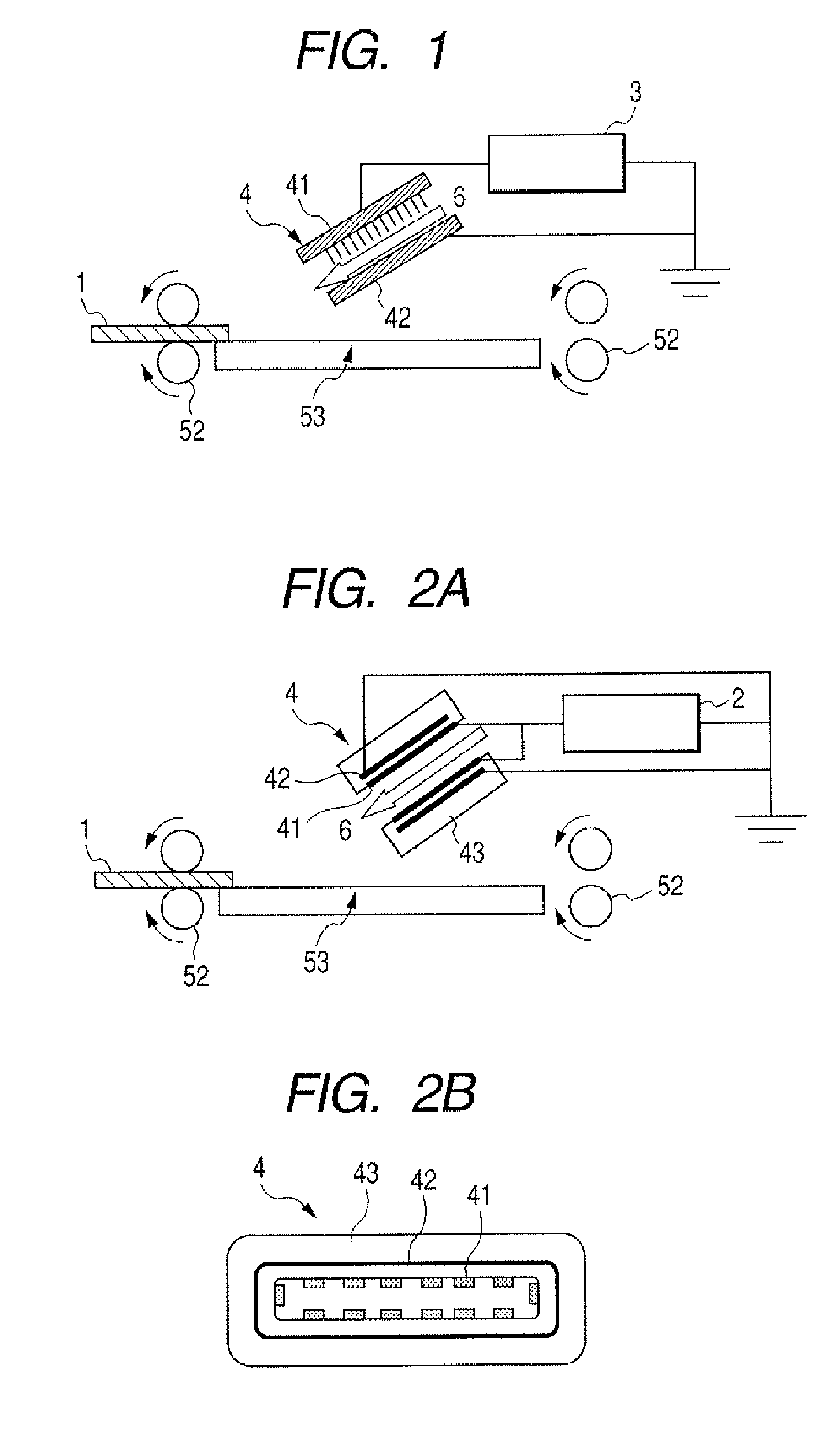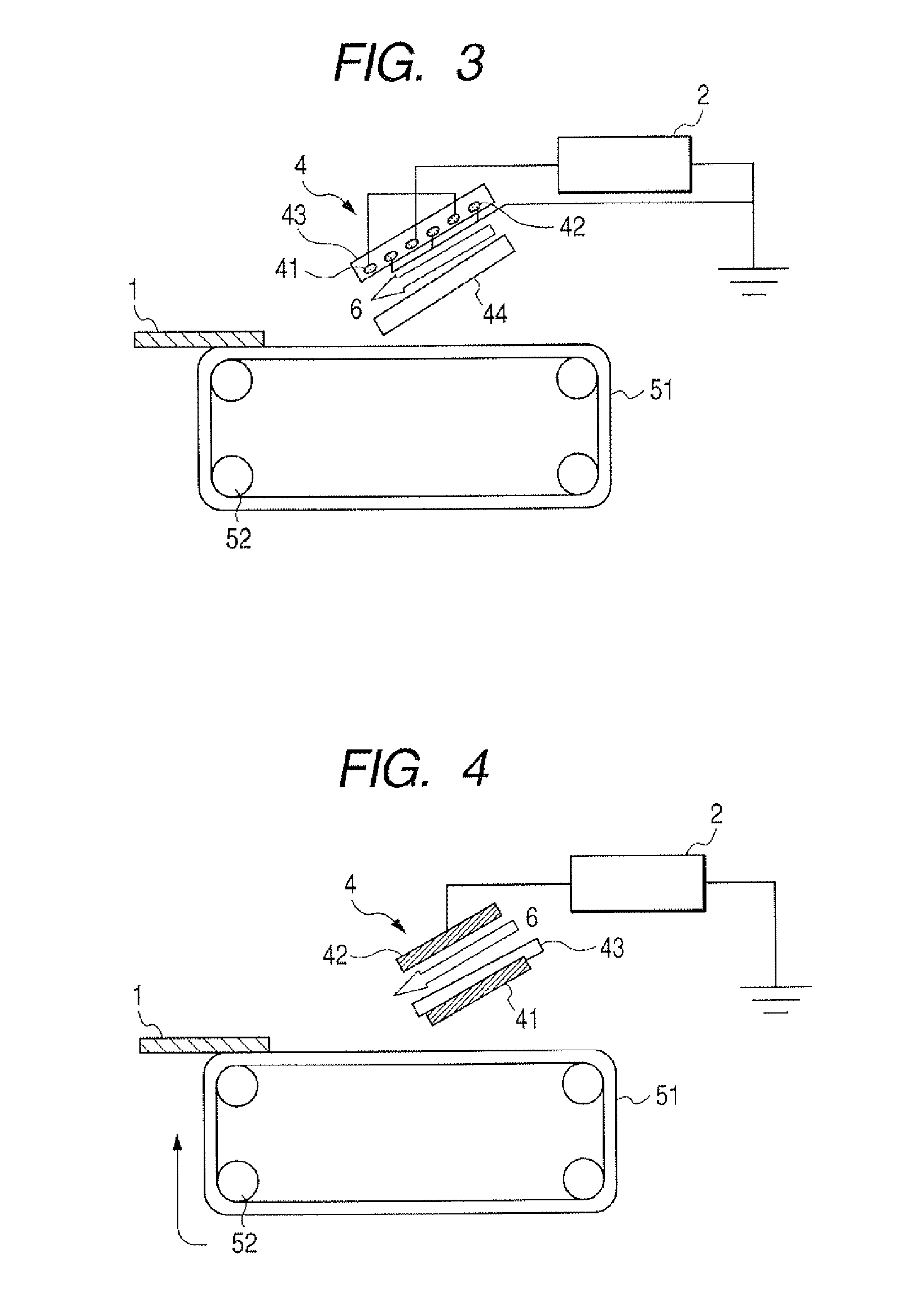Method for achromatizing dye, device which uses the same, and method for recycling recording medium
- Summary
- Abstract
- Description
- Claims
- Application Information
AI Technical Summary
Benefits of technology
Problems solved by technology
Method used
Image
Examples
preparation example 1
Recording Medium Preparation Example 1
[0107] An 85 / 15 by mass mixture of fine alumina powder (Cataloid® AP-3, Catalyst and Chemical Ind.) and polyvinyl alcohol (SMR-10HH®, Shin-Etsu Chemical) was prepared, and incorporated with water to have a solid content of 20% by mass and stirred. It was spread on a PET film to 30 g / m2 (dry basis), and dried at 110° C. for 10 minutes. The resulting recording medium was named RECORDING MEDIUM 1.
preparation example 2
Recording Medium Preparation Example 2
[0108] A 2 L stirrer-equipped flask was charged with the following components, which were stirred at room temperature for 30 minutes to prepare a uniform mixture. It was heated at 80° C. for 2 hours and then cooled to have a viscous, transparent liquid (BINDER A):
polyethylene glycol (average molecular weight: 2000), 800 g
hexamethylene diisocyanate, 65 g
dibutyl tin laurate, 2 g and
ethylene glycol dimethyl ether, 900 g.
[0109] The liquid prepared had a viscosity of 30,000 mPa·s at 25° C., and the polymer in ethylene glycol dimethyl ether as a solvent had a number-average molecular weight of 85,000.
[0110] Next, RECORDING MEDIUM 2 was prepared in the same manner as in RECORDING MEDIUM PREPARATION EXAMPLE 1, except that polyvinyl alcohol was used as BINDER A obtained in the above procedure.
preparation example 3
Recording Medium Preparation Example 3
[0111] A 2 L stirrer-equipped flask was charged with 300 g of hydroxyethyl methacrylate, 350 g of water, 350 g of methanol and 1.5 g of azobisisobutylonitrile, which were stirred at room temperature for 60 minutes. Then, the flask was thoroughly purged with a nitrogen gas, and the resulting mixture was heated to 65° C. in the presence of nitrogen gas flown slowly, and kept at this temperature for 3 hours for polymerization. The resulting polymer was cooled to have a viscous, transparent liquid (BINDER B). The liquid prepared had a viscosity of 1,800 mPa·s at 25° C., and the polymer in the mixed solvent of water / methanol had a number-average molecular weight of 150,000. Next, RECORDING MEDIUM 3 was prepared in the same manner as in RECORDING MEDIUM PREPARATION EXAMPLE 1, except that polyvinyl alcohol was used as BINDER B obtained in the above procedure.
PUM
 Login to View More
Login to View More Abstract
Description
Claims
Application Information
 Login to View More
Login to View More - R&D
- Intellectual Property
- Life Sciences
- Materials
- Tech Scout
- Unparalleled Data Quality
- Higher Quality Content
- 60% Fewer Hallucinations
Browse by: Latest US Patents, China's latest patents, Technical Efficacy Thesaurus, Application Domain, Technology Topic, Popular Technical Reports.
© 2025 PatSnap. All rights reserved.Legal|Privacy policy|Modern Slavery Act Transparency Statement|Sitemap|About US| Contact US: help@patsnap.com



